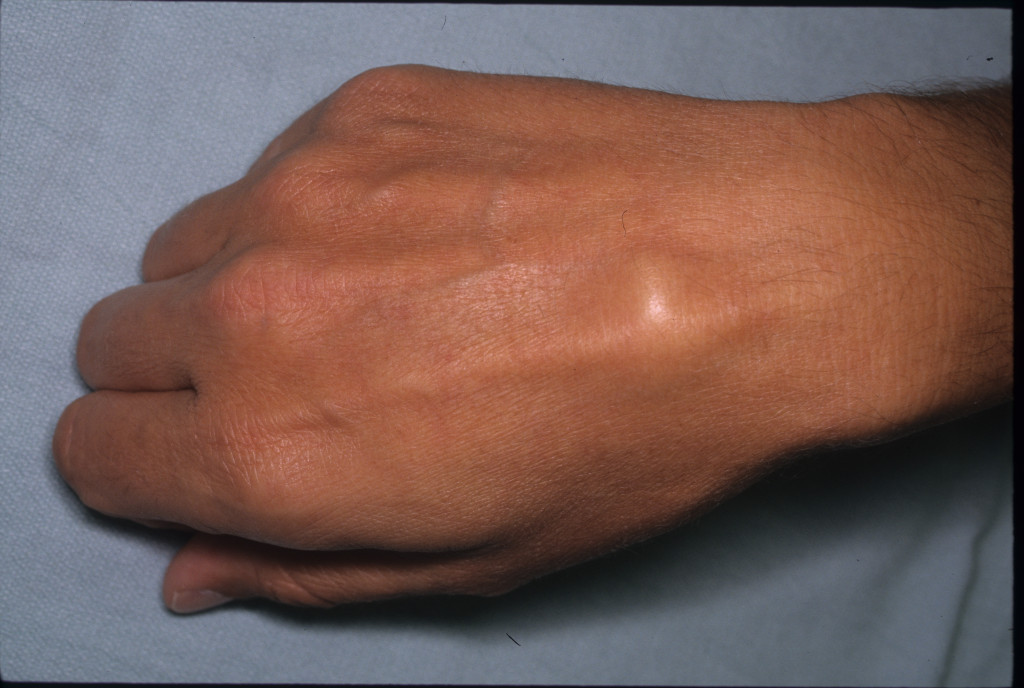A carpometacarpal boss is also known as a bossing. It is a bony overgrowth or lump on the back of your wrist at the base of your pointer finger or middle finger.
Causes
We don’t know what causes a boss exactly. Some people develop a carpometacarpal (CMC) boss following a traumatic injury or activities that involve repetitive wrist motion such as golf or racquet sports.
Signs and Symptoms
This problem is usually noticed in young adults between 20 and 40 years old. Men and women have this issue at about the same rate. Usually, it occurs on one wrist, but occasionally it can be present on both. Patients often notice a firm, immovable bump on the back of their wrist or hand. It can be painless or tender and achy.
Pain occurs when moving your wrist up and down. Painful or painless snapping of the tendons that straighten your fingers over the boss can occur. The boss is frequently mistaken for a ganglion cyst because they look the same and show up in the same places. Some patients can even have a ganglion on the boss itself!
Treatment
There are different treatment options available depending on how long you’ve had the boss, and what kinds of problems it is causing. If it is painless, you don’t need to do anything else. If it’s painful, you need to avoid movements and tasks that bring on the pain.
Treatment options include:
- Physical Therapy
- A wrist splint to immobilize and rest the wrist
- Icing of the painful area
- Pain relievers such as Motrin or Tylenol
- Steroid injection
You need surgery if your issue has been painful for an extended period of time, if non-surgical treatment has failed, or if there is painful snapping of the tendons. Surgery involves removing the boss. After surgery its normal to have pain and swelling. It may take several weeks to months to improve. In some patients, the pain does not completely go away and the joint may need to be fused, which is a separate surgical procedure.
Written by Travis Rohner PT



